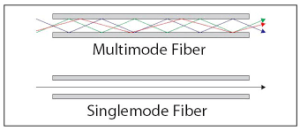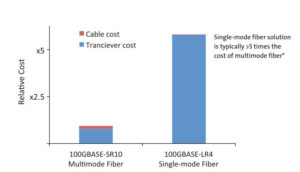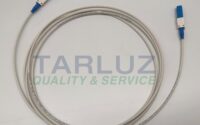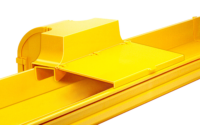How to Choose Multimode Fiber and Single Mode Fiber?
Emerging demand of higher bandwidth and faster speed connections has significantly enhanced the growth of fiber optic cable assemblies market over the past several years, especially the single mode fiber (SMF) and multimode fiber cable (MMF). However, though these two types of fiber optic cables are widely used in diverse applications, the problem—How to choose multimode fiber and single mode fiber—is still confusing.
Single Mode and Multimode Fiber Overview
Single mode means the fiber enables one type of light mode to be propagated at a time. While multimode means the fiber can propagate multiple modes. The difference between single mode and multimode fiber mainly lies in fiber core diameter, wavelength, light source and bandwidth.

Differences between Single Mode Fiber and Multimode Fiber
- Core Diameter
Single mode fiber core diameter is much smaller than multimode fiber.
The typical core diameter is 9µm even if there are others available. And multimode fiber core diameter is 50µm and 62.5µm typically, which enables it has higher “light gathering” ability and simplify connections. The cladding diameter of single mode and multimode fiber is 125µm.

- Wavelength & Light Source
Due to the large core size if multimode fiber, some low-cost light sources like LEDs (light-emitting diodes) and VCSELs (vertical cavity surface-emitting lasers) that works at the 850nm and 1310nm wavelength are used in multimode fiber cables. While the single mode often uses a laser or laser diodes to produce light injected into the cable. And the commonly used single mode fiber wavelength is 1310nm and 1550nm.

- Bandwidth
Multimode fiber bandwidth is limited by its light mode and the maximum bandwidth at present is 28000MHz*km of OM5 fiber. While single mode fiber bandwidth is unlimited theoretically due to it allows one light of mode to pass through at a time.
How to Choose Multimode Fiber and Single Mode Fiber?
- System Cost
To utilize the fundamental attributes of single-mode fibers, which are generally geared towards longer distance applications, requires transceivers with lasers that operate at longer wavelengths with smaller spot-size and generally narrower spectral width. These transceiver characteristics combined with the need for higher-precision alignment and tighter connector tolerances to smaller core diameters result in significantly higher transceiver costs and overall higher interconnect costs for singe-mode fiber interconnects.

- Installation Cost
Single-mode optical fiber often costs less than multimode fiber. When building a 1G fiber optic network that you want to be able to go to 10G or faster on eventually, the savings on cost of fiber for single-mode saves about half-price. While the multimode OM3 or OM4 fiber increase 35% in cost for SFP modules. The single-mode optics are more expensive, but the labor costs of replacing the multimode are significantly higher, especially if those followed OM1—OM2—OM3—OM4.
Summary
From the comparison, it can conclude that both single-mode optics and multimode optics have their own features. Single-mode fiber cabling system is suitable for long-reach data transmission applications and widely deployed in carrier networks, MANs and PONs. Multimode fiber cabling system has a shorter reach and is widely deployed in enterprise, data centers. No matter which one you choose, on the basis of total fiber cost, choosing the one that best suits your network demands is an important task for every network designer.


